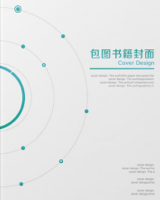Charged Particle Irradiation for Pancreatic Cancer: A Systematic Review of In Vitro Studies
Wang, Dandan
Liu, Ruifeng
Zhang, Qiuning
Show more
Luo, Hongtao
Chen, Junru
Dong, Meng
Wang, Yuhang
Ou, Yuhong
Liu, Zhiqiang
Sun, Shilong
Yang, Kehu
Tian, Jinhui
Li, Zheng
Wang, Xiaohu
Close more
Zhang, QN; Wang, XH (通讯作者),Chinese Acad Sci, Inst Modern Phys, Lanzhou, Peoples R China.;Wang, XH (通讯作者),Lanzhou Univ, Sch Clin Med 1, Lanzhou, Peoples R China.;Zhang, QN; Wang, XH (通讯作者),Univ Chinese Acad Sci, Dept Postgrad, Beijing, Peoples R China.;Zhang, QN; Wang, XH (通讯作者),Lanzhou Heavy Hosp, Heavy Therapy Ctr, Lanzhou, Peoples R China.
Purpose: Given the higher precision accompanied by optimized sparing of normal tissue, charged particle therapy was thought of as a promising treatment for pancreatic cancer. However, systematic preclinical studies were scarce. We aimed to investigate the radiobiological effects of charged particle irradiation on pancreatic cancer cell lines.Methods: A systematic literature search was performed in EMBASE (OVID), Medline (OVID), and Web of Science databases. Included studies were in vitro English publications that reported the radiobiological effects of charged particle irradiation on pancreatic cancer cells.Results: Thirteen carbon ion irradiation and seven proton irradiation in vitro studies were included finally. Relative biological effectiveness (RBE) values of carbon ion irradiation and proton irradiation in different human pancreatic cancer cell lines ranged from 1.29 to 4.5, and 0.6 to 2.1, respectively. The mean of the surviving fraction of 2 Gy (SF2) of carbon ion, proton, and photon irradiation was 0.18 & PLUSMN; 0.11, 0.48 & PLUSMN; 0.11, and 0.57 & PLUSMN; 0.13, respectively. Carbon ion irradiation induced more G2/M arrest and a longer-lasting expression of gamma H2AX than photon irradiation. Combination therapies enhanced the therapeutic effects of pancreatic cell lines with a mean standard enhancement ratio (SER) of 1.66 & PLUSMN; 0.63 for carbon ion irradiation, 1.55 & PLUSMN; 0.27 for proton irradiation, and 1.52 & PLUSMN; 0.30 for photon irradiation. Carbon ion irradiation was more effective in suppressing the migration and invasion than photon irradiation, except for the PANC-1 cells.Conclusions: Current in vitro evidence demonstrates that, compared with photon irradiation, carbon ion irradiation offers superior radiobiological effects in the treatment of pancreatic cancer. Mechanistically, high-LET irradiation may induce complex DNA damage and ultimately promote genomic instability and cell death. Both carbon ion irradiation and proton irradiation confer similar sensitization effects in comparison with photon irradiation when combined with chemotherapy or targeted therapy.
